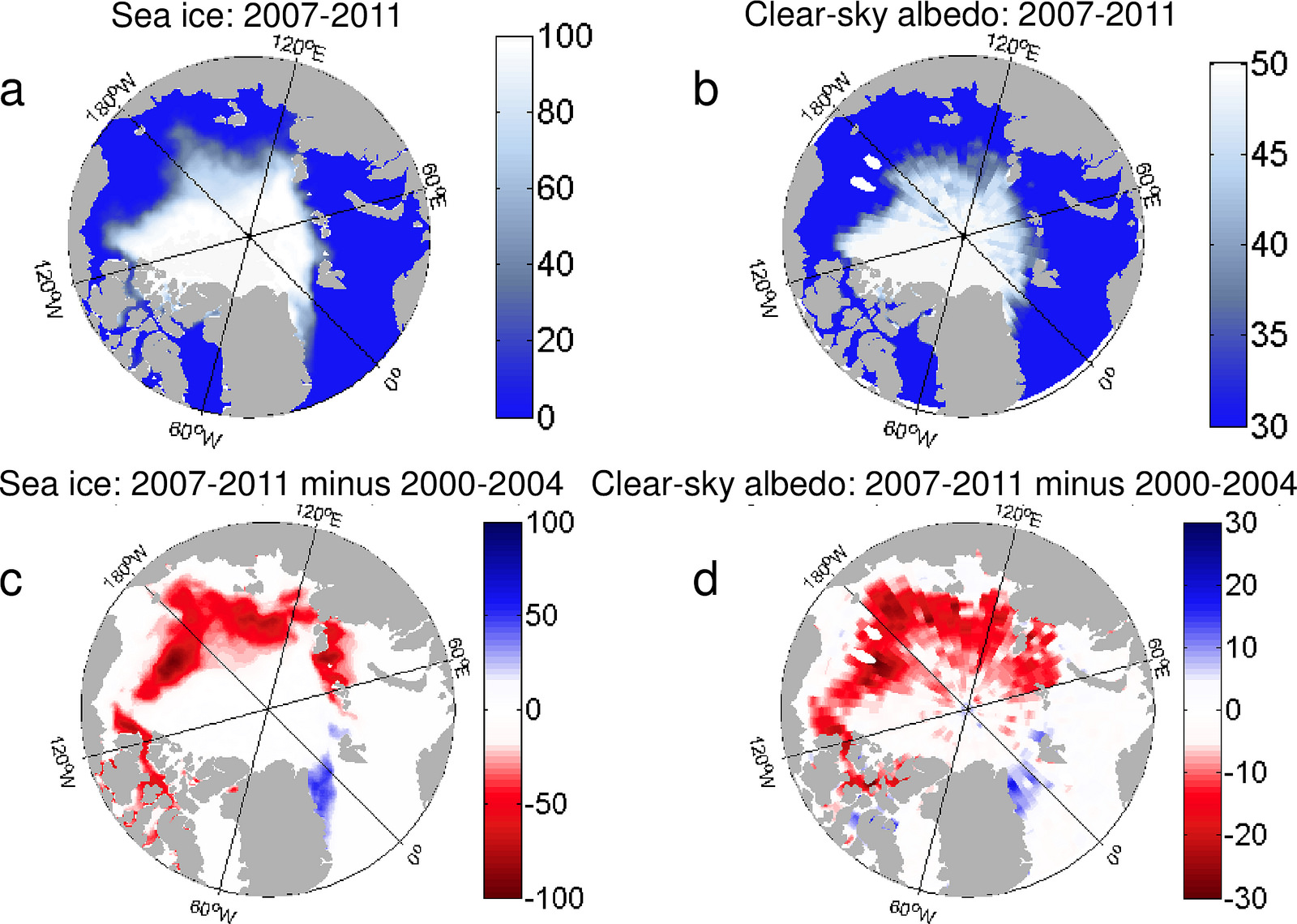
Scientists have long suspected a relationship between sea ice and albedo, or the Earth’s ability to reflect sunlight. Now, it has been verified with satellite observations.
Ian Eisenman, co-author of a scientific paper published this week in the Proceedings of the National Academy of Sciences, explains that less sea ice makes the planet look darker from space, which means less solar radiation is reflected.
“Just like how you feel hotter on a sunny day with a black T-shirt than if you wear a white T-shirt,” Eisenman said.
The research uses more than 30 years of satellite measurements of sea ice coverage and reflected solar radiation to determine planetary darkening from sea ice retreat.
Eisenman and two colleagues compared their data with simulation results from the latest global climate models.

Eisenman said their results were “rather striking” — planetary darkening and solar energy heating are two to three times greater than previously believed.
Since the 1970s, the Arctic has warmed by 3.6 degrees Fahrenheit, and the summer low for Arctic sea ice coverage has decreased 40 percent.
Eisenman said his team also looked into the idea that more exposed ocean could create more cloud cover and compensate for lost sea ice.
“Changes in cloud cover do not look like they’re playing a major role in the reflectiveness of the Arctic,” Eisenman said.
Eisenman is an associate professor of climate dynamics at the Scripps Institution of Oceanography at the University of California, San Diego. Graduate student Kristina Pistone led the research and was principal author of the paper. Climate and atmospheric sciences professor Veerabhadran Ramanathan also contributed.
[box type=”shadow”]Observational determination of albedo decrease caused by vanishing Arctic sea ice
Abstract by Kristina Pistone, Ian Eisenman, and Veerabhadran Ramanathan
The decline of Arctic sea ice has been documented in over 30 y of satellite passive microwave observations. The resulting darkening of the Arctic and its amplification of global warming was hypothesized almost 50 y ago but has yet to be verified with direct observations. This study uses satellite radiation budget measurements along with satellite microwave sea ice data to document the Arctic-wide decrease in planetary albedo and its amplifying effect on the warming. The analysis reveals a striking relationship between planetary albedo and sea ice cover, quantities inferred from two independent satellite instruments. We find that the Arctic planetary albedo has decreased from 0.52 to 0.48 between 1979 and 2011, corresponding to an additional 6.4 ± 0.9 W/m2 of solar energy input into the Arctic Ocean region since 1979. Averaged over the globe, this albedo decrease corresponds to a forcing that is 25% as large as that due to the change in CO2 during this period, considerably larger than expectations from models and other less direct recent estimates. Changes in cloudiness appear to play a negligible role in observed Arctic darkening, thus reducing the possibility of Arctic cloud albedo feedbacks mitigating future Arctic warming.
Significance
The Arctic sea ice retreat has been one of the most dramatic climate changes in recent decades. Nearly 50 y ago it was predicted that a darkening of the Arctic associated with disappearing ice would be a consequence of global warming. Using satellite measurements, this analysis directly quantifies how much the Arctic as viewed from space has darkened in response to the recent sea ice retreat. We find that this decline has caused 6.4 ± 0.9 W/m2 of radiative heating since 1979, considerably larger than expectations from models and recent less direct estimates. Averaged globally, this albedo change is equivalent to 25% of the direct forcing from CO2 during the past 30 y. [/box]
Link to Scripps Institution of Oceanography website about the research: Satellite data reveal the rapid darkening of the Arctic